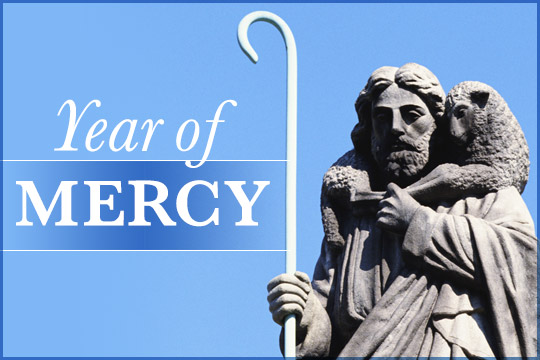
Jesus taught that, “Greater love has no one than this: to lay down one’s life for one’s friends.” (John 15:13) He then proceeded to lay down his life for us by dying on the Cross. We Catholics place crucifixes in our homes and places of worship and formation as a reminder of the mystery of our faith: it is by dying that we are born to eternal life. This is the kind of love that we are called to share. As mystagogical catechists, we are then called to mentor others into this way of life, apprenticing those we teach in works of mercy. We act as mystagogues when we apprentice others in the art of laying down one’s life for others. The Directory for Catechesis tells us that in faith formation, “Everything is oriented toward the mystery of Christ’s passion, death, and resurrection.” (64a)
But what does it mean to “lay down one’s life”? Jesus, of course, laid down his life for us. Over the centuries of Church history, many martyrs have laid down their lives for their faith. And, of course, many military personnel and first responders have laid down their lives for others.
What about the rest of us? Is the “greatest love” out of reach for the average person because we have not and probably will not be killed because of our faith? I think we have too narrowly defined what it means to “lay down your life” for others. While some, like Jesus, actually die for others, the rest of us are called to lay down our lives for others each and every day. To die for others is the ultimate example, but ultimately, to lay down our life means to set our own needs aside in order to tend to the needs of others.
We are called to do this every day. Parents and spouses set aside their own needs in order to tend to the needs of their children and one another. Teachers and catechists set aside their own needs to tend to the needs of their students. Doctors and nurses set aside their own needs to tend to the needs of their patients. Workers set aside their own needs to tend to the needs of their customers or co-workers. And so on.
It is our job as catechists/mystagogues to teach people how to lay down their lives. In Ignatian spirituality, this is known as being “people for others.” We instill this notion of being people for others by providing our learners with opportunities to practice selfless love. Whether we call them service projects, mercy experiences, people-for-others projects, or something else, we must be about the work of apprenticing those we teach in acts of selfless love—the laying down their lives for others and then inviting them to reflect on how they encounter Christ in doing so.
As evangelizing catechists, we need to do more than indoctrinate; we need to instigate! We need to mobilize people to participate in works that are characterized by setting their own needs aside and tending to the needs of others. The Directory for Catechesis tells us that, “It becomes ever clearer that there is no proclamation of the faith if this is not a sign of God’s mercy. The practice of mercy is already itself an authentic catechesis: it is catechesis in action.” (51)
There is a reason that science classes are usually coupled with science labs: in a laboratory, students experience firsthand the theoretical concepts they are learning in class. This gives them an opportunity to verify for themselves the ideas they’re learning. By seeing, handling, and manipulating various objects and materials in a lab, students more fully grasp the concepts they are learning. For disciples of Jesus, engaging in works of mercy serves as a laboratory where love of neighbor can be experienced up close and in depth. The mystagogical catechist identifies and then leads others into opportunities to practice selfless love—sacrificial love, the kind of love that is the very essence of God. These Catholic calls to action are ways in which we find ourselves by losing ourselves. They are all ways in which we gain life by laying down our life for others. And they must become an integral part of the curriculum of faith formation for all ages if we are to transform hearts and minds.
If we’re waiting until eighth grade or high school Confirmation classes to involve young people in service or mercy experiences, we’re waiting too long! From the very beginning of faith formation, participants—including adults in OCIA—should be invited to participate in mercy experiences, experiences of selfless love in which they lay down their lives for the lives of others. This is the most effective way to loosen the soil of people’s hearts so that love may grow.
There is no getting around the Cross; it is the key to fullness of life, and it is the responsibility of the mystagogue to lead others into the mystery of the Cross.




Be the first to comment